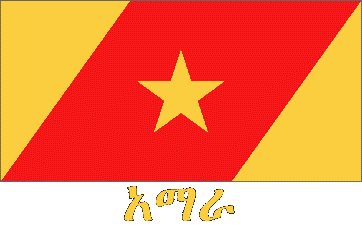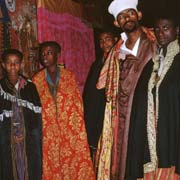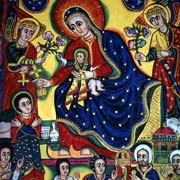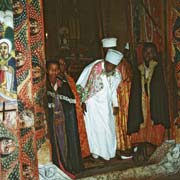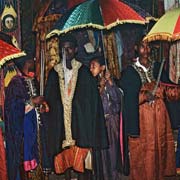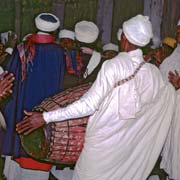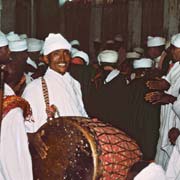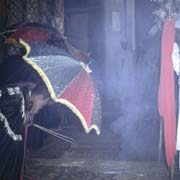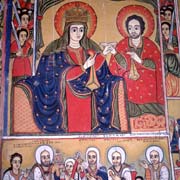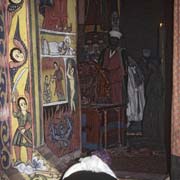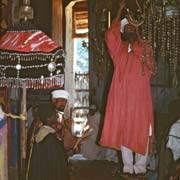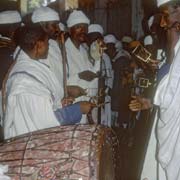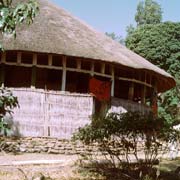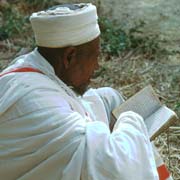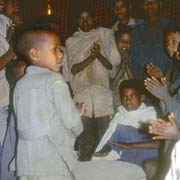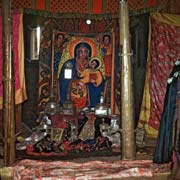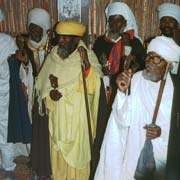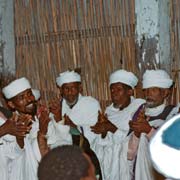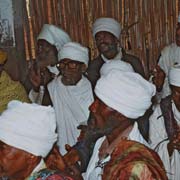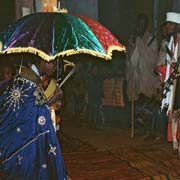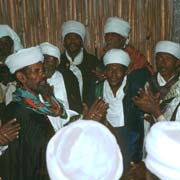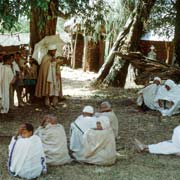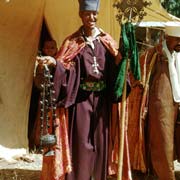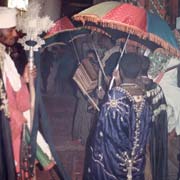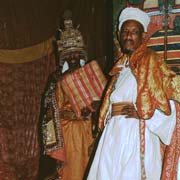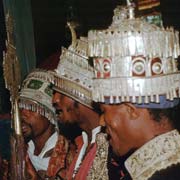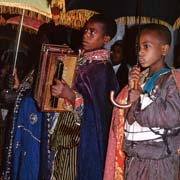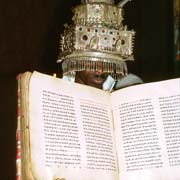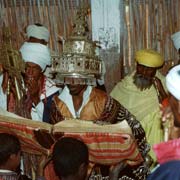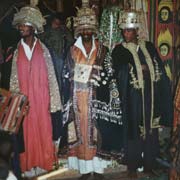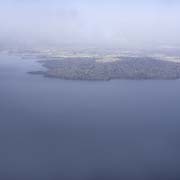Photos of A Monastery Festival on Lake Tana, Ethiopia
A Monastery Festival on Lake Tana
Lake Tana, “Tana Hayk”, Ethiopian’s great highland lake, lies just north of the town of Bahir Dar at the height of 1,840 metres above sea level. It was created by volcanic activity about 25 million years ago. It has a wealth of birdlife, but the most notable aspect of this lake is a great many Ethiopian orthodox churches and monasteries along the shores and on the islands.
you may then send it as a postcard if you wish.
About 21 churches and monasteries hold impressive collections of religious objects, including silver crowns, crucifixes, and huge bibles in Ge’ez, the Ethiopian liturgical language. There are unique icons, mural paintings, manuscripts on parchment and scrolls, representing beautiful examples of Ethiopian civilisation. The Zege Peninsula, on the southwestern side of the lake, has what is probably the most accessible monastery, Ura Kidane Mihret: it is not highly isolated from the local communities, surrounded by people who are leading a non-monastic life. The peninsula is a two-hour boat journey from Bahir Dar, but it is also accessible overland in the dry season.
The monastery of Ura Kidane Mihret consists, like the others, of a wooden church shaped like a traditional African house. It has a thatched roof, topped by a large cross, decorated with ostrich feathers (although a corrugated iron roof has been placed to protect its treasures from leaking water). A corridor runs around the outer wall with several entrances. In the centre of the church, surrounded by an inner passage, is the “Holy of Holies”, the inner chamber where the “Tabot”, a replica of the Ark of the Covenant, is kept; only priests may enter this. The walls are covered in frescoes, there are large candelabras, and the air is thick with incense. Around the church, in the surrounding woods, are “tukul”, round huts where the monks live. The treasures and relics are kept in a smaller stone church.
There are frequent festivals on the liturgical calendar, like this Festival of the Virgin Mary. In magnificent robes and holding staffs and crosses, five priests walk around the inner corridor. Six acolytes attend them: young boys, dressed in robes with silver ornaments and carrying colourful umbrellas as a sign of honour to the priests, the bishop and sacred objects. At every corner, they bow and sing in Ge’ez, Ethiopia’s liturgical language. Meanwhile, in another room, around 50 turbaned priests and monks sing and dance, accompanied by two large “Kabaro” drums, “tsinatseil” (sistrum), a rattle, which has small metal disks loosely suspended on rods, and the clapping of hands: a very lively performance. Later, while a boy acolyte plays the accordion, three priests, each wearing a large silver crown, bring a large Bible from the Holy of Holies.
